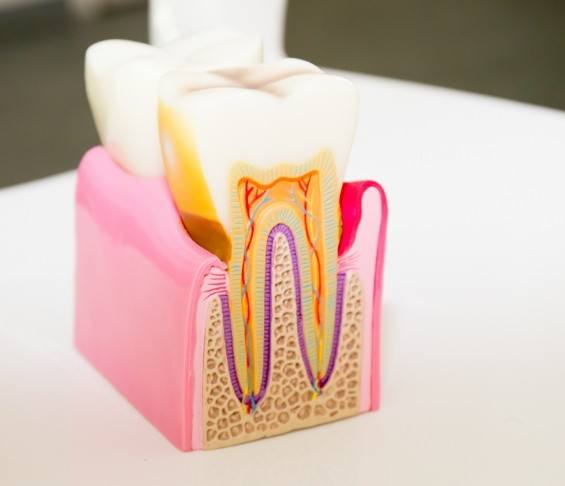Endodontic Retreatment – Jersey City, NJ
Treating Teeth After a Root Canal

Usually, root canal treatment is enough to put a stop to your tooth pain and protect your smile. However, some patients eventually end up suffering from discomfort in the treated tooth again, or they continue to notice symptoms of infection. The good news is that even if this happens to you, it doesn’t necessarily mean that the tooth is beyond salvaging. Reach out to Endodontic Group of Jersey City today if you think that a tooth that previously received root canal therapy may need endodontic retreatment.
Why Choose Endodontic Group of Jersey City for Endodontic Retreatment?
- Multiple Trustworthy Endodontists
- Team That Puts Comfort First
- We Offer Same-Day Visits for Emergencies
What Is Endodontic Retreatment?

If root canal therapy has already been performed but there’s still a problem with the tooth in question, endodontic retreatment may be necessary. For this procedure, we will open the tooth again and check to see if any root canals weren’t properly cleaned during the first treatment. The goal is to get rid of any harmful bacteria that may have been missed the first time. A successful endodontic retreatment could be the key to preventing your tooth from needing to be extracted.
Why Would I Need Endodontic Retreatment?

There are a few warning signs that may indicate that endodontic retreatment is needed. A particularly obvious example is if there’s any discomfort in the tooth that was treated. You should also take note if a pimple-like bump appears on the gums near the tooth in question. This bump is known as an abscess, and its presence could mean there’s an infection in the tooth. Don’t waste any time in giving our office a call if you have any reason to think that you may need endodontic retreatment.
The Endodontic Retreatment Process

After your mouth has been sufficiently numbed with a local anesthetic, we will take the crown off of your tooth, and the biocompatible filling material that was previously placed will be removed. We will thoroughly examine the tooth before performing another cleaning in order to remove infection from any areas that were missed the first time. Once we’re done, we will refill the tooth. In many cases, we will ask you to return to our office for a follow-up visit so that we can be sure that there aren’t any issues.
Endodontic Retreatment FAQs
Does Endodontic Retreatment Always Happen Soon after the First Try?
No, in fact, root canals generally turn out positively for the patient, at least in the short term. Often a tooth that was successfully treated with a root canal in the past eventually suffers additional damage or infection years later. In other words, you may have had a tooth fixed and restored a long time ago that suddenly gives you discomfort or trouble now. Over time, advancements in endodontic procedures have made it possible to save the tooth again!
Is Tooth Extraction Better or Easier Than Endodontic Retreatment?
You may wonder if saving your natural tooth is worth going through another endodontic procedure. It may seem simpler to remove and replace it. However, even dental implants, which are widely considered the best replacement alternative, still don’t quite measure up to what natural teeth are capable of. Plus, whether you receive a bridge, partial denture, or implant, the process of substituting a lost tooth requires lengthy and costly treatment. Instead of affecting your surrounding teeth, undergoing surgery, waiting for months for your restoration, and paying for a prosthetic tooth, you can hold onto your natural tooth even longer.
How Long Does Endodontic Retreatment Take?
Think of endodontic retreatment as a more in-depth root canal. Because the restoration and seal must be taken off and the entire tooth structure more thoroughly examined and cleared out, you can expect this procedure to take more time than your initial root canal. Although the timeframe will vary based on the complexity of the issue, make sure you block out plenty of time in your schedule to complete the treatment. When we schedule your retreatment, we should be able to give you an estimate you can plan around.
Does Dental Insurance Cover Endodontic Retreatment?
When it comes to endodontic retreatment, dental insurance policies can differ in coverage. Many plans pay for it just like they do root canal treatment, which is generally about 50 percent of the total cost. However, be aware that some policies come with limitations. Specifically, they state that the insurance company will only pay for a single treatment on one tooth within a certain timeframe. If your tooth recently had a root canal, you may be responsible for the entire price of retreatment out-of-pocket. On the other hand, if the tooth was treated a while ago, it may be eligible for coverage again. We will walk you through the financial details, so you experience as few surprises as possible.
